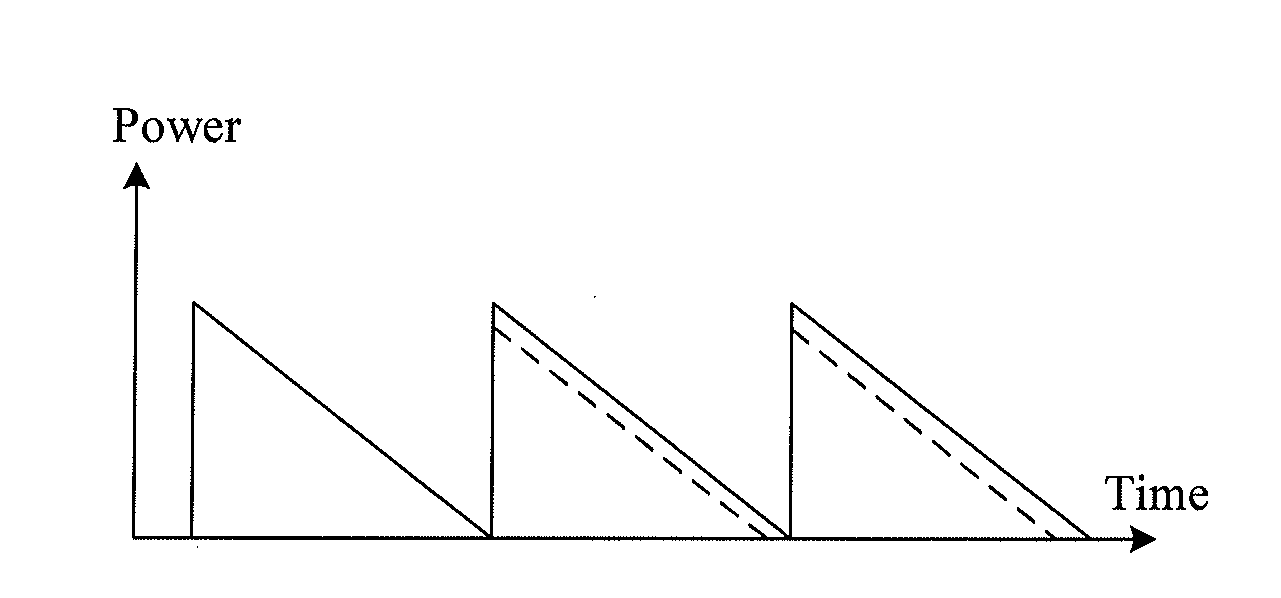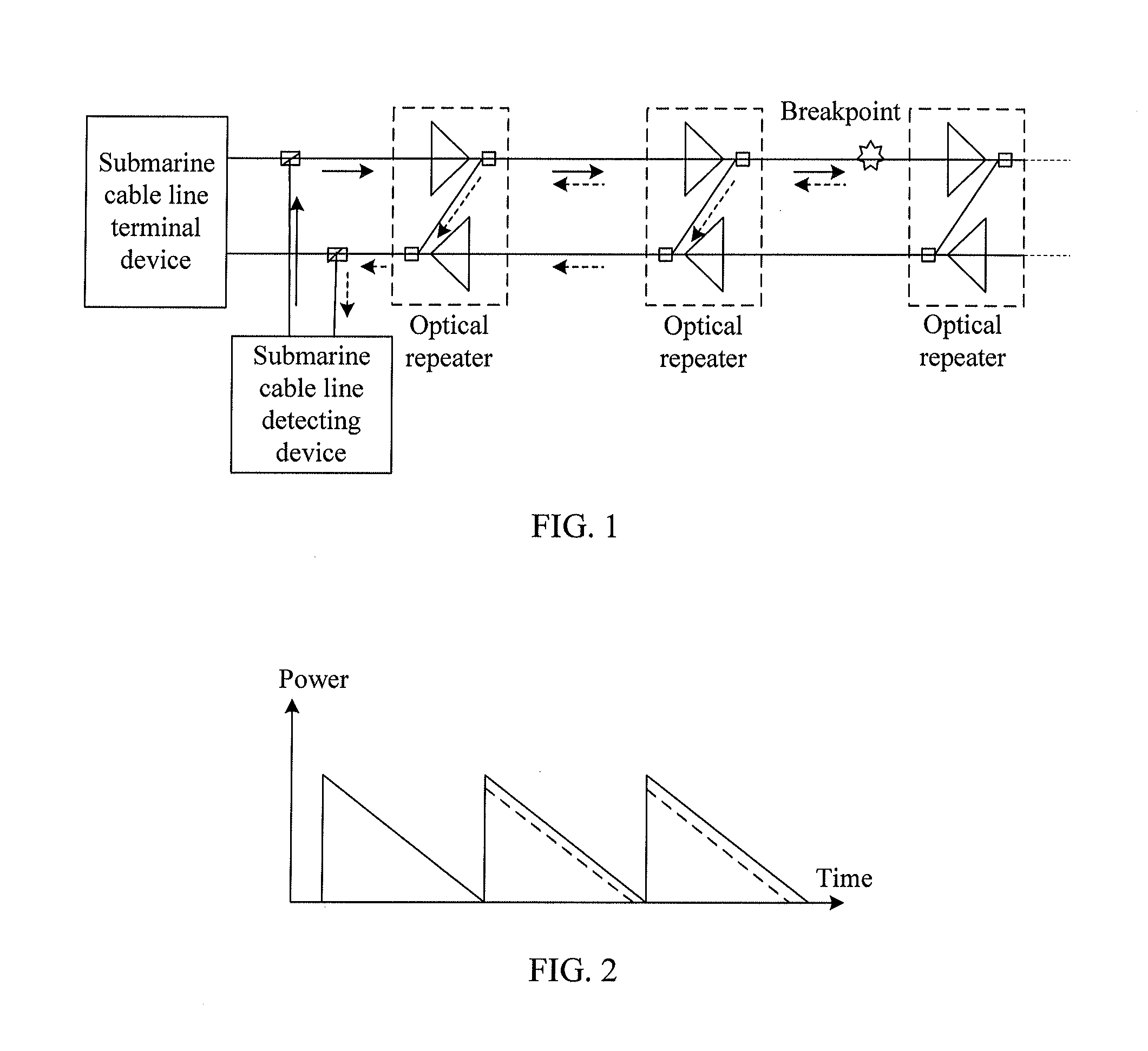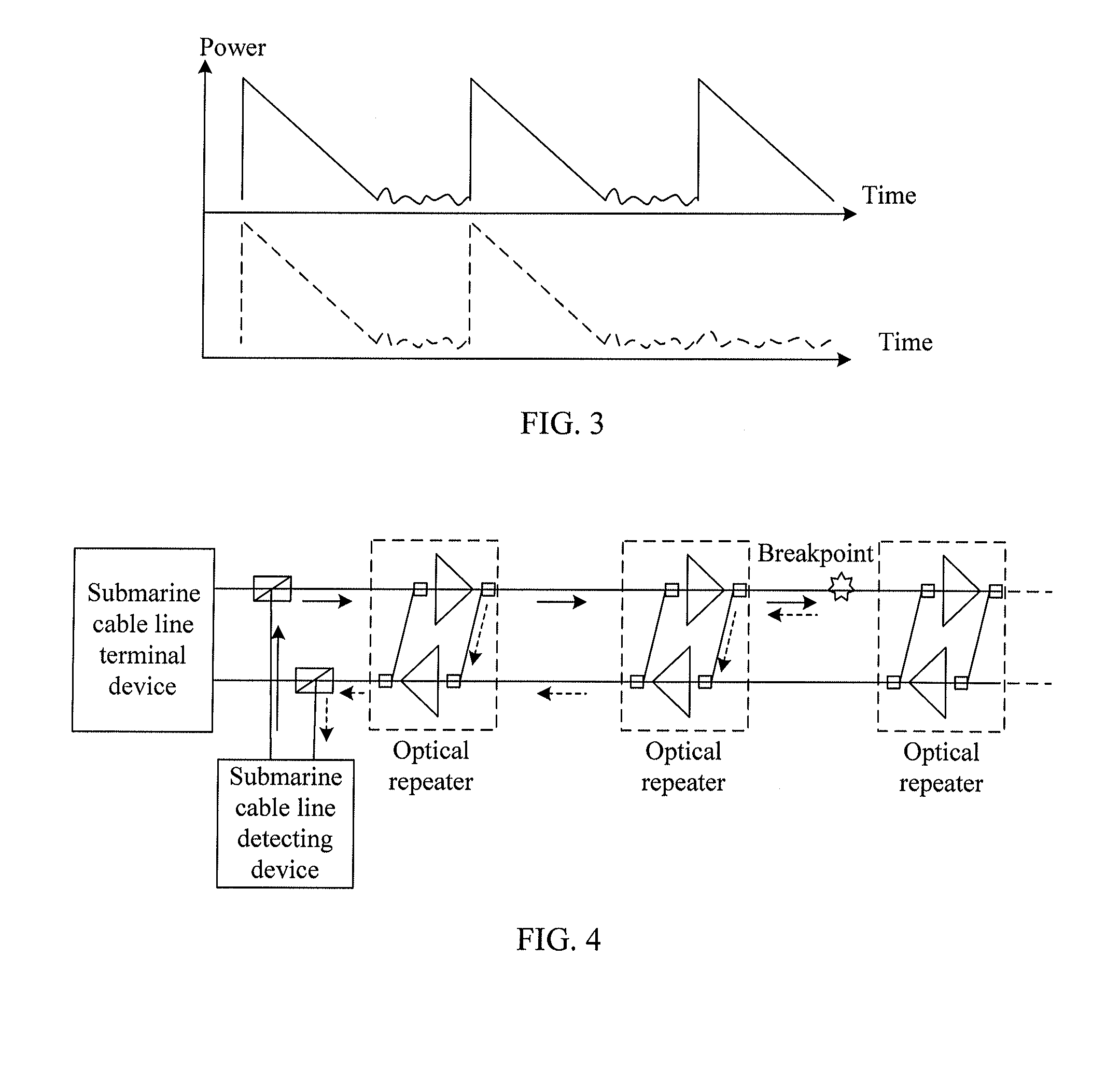Method, transport apparatus, and system for detecting submarine optical cable line
a technology of optical cable and transport apparatus, applied in the field of optical communication technologies, can solve the problems of submarine optical cable and device failures that have a huge impact on communication, difficult to identify pump failure events, and difficult to distinguish whether the cable is broken or the next optical repeater fails
- Summary
- Abstract
- Description
- Claims
- Application Information
AI Technical Summary
Benefits of technology
Problems solved by technology
Method used
Image
Examples
embodiment 1
[0139]FIG. 13 is a schematic structural diagram of an apparatus for detecting a submarine optical cable line according to Embodiment 1. The first coupling apparatus includes a first coupler 1303 and a first reflector 1304; the second coupling apparatus includes a second coupler 1306; the third coupling apparatus includes a third coupler 1309; and the fourth coupling apparatus includes a fourth coupler 1311 and a fourth reflector 1310. The optical repeater includes a pair of a first amplifier 1301 and a second amplifier 1302 for amplification and arranged in opposite transmission directions; the input end and output end of the first amplifier 1301 are respectively connected to the first coupler 1303 and the second coupler 1306; symmetrically, the input end and output end of the second amplifier 1302 are respectively connected to the fourth coupler 1311 and the third coupler 1309. The first coupler 1303, the second coupler 1306, the third coupler 1309, and the fourth coupler 1311 are ...
embodiment 2
[0151]FIG. 17 is a schematic structural diagram of an apparatus for detecting a submarine optical cable line according to Embodiment 2. The first coupling apparatus includes a first coupler 1703 and a first reflector 1704; the second coupling apparatus includes a second coupler 1706 and a second reflector 1707; the third coupling apparatus includes a third coupler 1709 and a third reflector 1708; and the fourth coupling apparatus includes a fourth coupler 1712 and a fourth reflector 1711. The optical repeater includes a first amplifier 1701 and a second amplifier 1702. The first amplifier 1701 and the second amplifier 1702 are used for amplification and arranged in opposite transmission directions; the input end and output end of the first amplifier 1701 are respectively connected to the first coupler 1703 and the second coupler 1706; symmetrically, the input end and output end of the second amplifier 1702 are respectively connected to the fourth coupler 1712 and the third coupler 1...
embodiment 3
[0162]FIG. 18 is a schematic structural diagram of an apparatus for detecting a submarine optical cable line according to Embodiment 3. The first coupling apparatus includes a first coupler 1803 and a first reflector 1805; the second coupling apparatus includes a second coupler 1806 and a second reflector 1808; the third coupling apparatus includes a third coupler 1809 and a third reflector 1811; and the fourth coupling apparatus includes a fourth coupler 1812 and a fourth reflector 1813. The optical repeater includes a pair of a first amplifier 1801 and a second amplifier 1802 for amplification and arranged in opposite transmission directions; the input end and output end of the first amplifier 1801 are respectively connected to the first coupler 1803 and the second coupler 1806; symmetrically, the input end and output end of the second amplifier 1802 are respectively connected to the third coupler 1809 and the fourth coupler 1812. The first coupler 1803, the second coupler 1806, t...
PUM
 Login to view more
Login to view more Abstract
Description
Claims
Application Information
 Login to view more
Login to view more - R&D Engineer
- R&D Manager
- IP Professional
- Industry Leading Data Capabilities
- Powerful AI technology
- Patent DNA Extraction
Browse by: Latest US Patents, China's latest patents, Technical Efficacy Thesaurus, Application Domain, Technology Topic.
© 2024 PatSnap. All rights reserved.Legal|Privacy policy|Modern Slavery Act Transparency Statement|Sitemap



